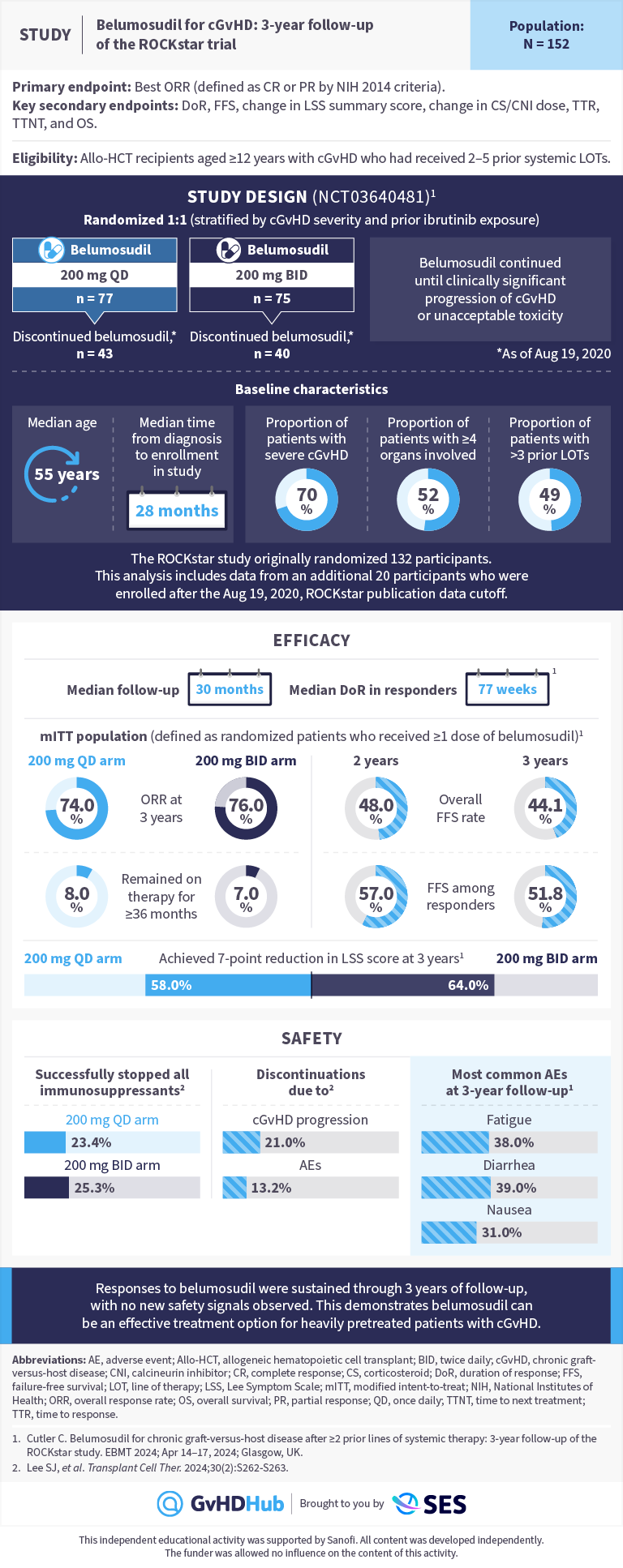All content on this site is intended for healthcare professionals only. By acknowledging this message and accessing the information on this website you are confirming that you are a Healthcare Professional.
The gvhd Hub website uses a third-party service provided by Google that dynamically translates web content. Translations are machine generated, so may not be an exact or complete translation, and the gvhd Hub cannot guarantee the accuracy of translated content. The gvhd and its employees will not be liable for any direct, indirect, or consequential damages (even if foreseeable) resulting from use of the Google Translate feature. For further support with Google Translate, visit Google Translate Help.
The GvHD Hub is an independent medical education platform, sponsored by Medac and supported through grants from Sanofi and Therakos. The funders are allowed no direct influence on our content. The levels of sponsorship listed are reflective of the amount of funding given. View funders.
Now you can support HCPs in making informed decisions for their patients
Your contribution helps us continuously deliver expertly curated content to HCPs worldwide. You will also have the opportunity to make a content suggestion for consideration and receive updates on the impact contributions are making to our content.
Find out more
Create an account and access these new features:
Bookmark content to read later
Select your specific areas of interest
View GvHD content recommended for you
Belumosudil for cGvHD: 3-year follow-up from the ROCKstar trial
Do you know... After 3-years in the ROCKstar trial, what proportion of patients in the modified intent-to-treat population had an overall response to belumosudil?
Chronic graft-versus-host disease (cGvHD) is characterized by inflammation, fibrosis, and tissue damage, and can have a profound impact on quality of life.1 Up to 70% of patients who receive an allogeneic stem cell transplant may be affected by cGvHD.1
Belumosudil, an oral selective Rho-associated coiled coil-containing protein kinase 2 (ROCK2) inhibitor, dually inhibits the inflammation and fibrosis that occurs in cGvHD. Inhibition of ROCK2 leads to downregulation of STAT3 phosphorylation, and restores the Th17/Treg cell balance through a STAT5 pathway, increasing the proportion of Treg cells.1,2 By preventing ROCK2 activation through profibrotic mediators, belumosudil also blocks differentiation of fibroblasts into myofibroblasts.1
The phase II ROCKstar trial (NCT03640481) evaluated belumosudil 200 mg once or twice daily in 132 patients with heavily pre-treated cGvHD;1 the 3-year follow-up data includes a further 20 patients enrolled in a subsequent biomarker study.2 Patients (N = 152) were evaluated for safety and efficacy for up to 3 years.2
Responses to belumosudil were sustained through 3 years of follow-up, with no new safety signals observed.2 Fewer patients in the 200 mg BID arm discontinued due to disease progression and adverse events compared to the 200 mg QD arm (13.2% vs 21%, respectively). This demonstrates belumosudil can be an effective treatment option for heavily pretreated patients with cGvHD.2

This educational resource is independently supported by Sanofi. All content was developed by SES in collaboration with an expert steering committee; funders were allowed no influence on the content of this resource.
Your opinion matters
After reading this article, I commit to reviewing the latest data on belumosudil for cGvHD, and applying my learnings to my management of patients with cGvHD in clinical practice.
References
Please indicate your level of agreement with the following statements:
The content was clear and easy to understand
The content addressed the learning objectives
The content was relevant to my practice
I will change my clinical practice as a result of this content



